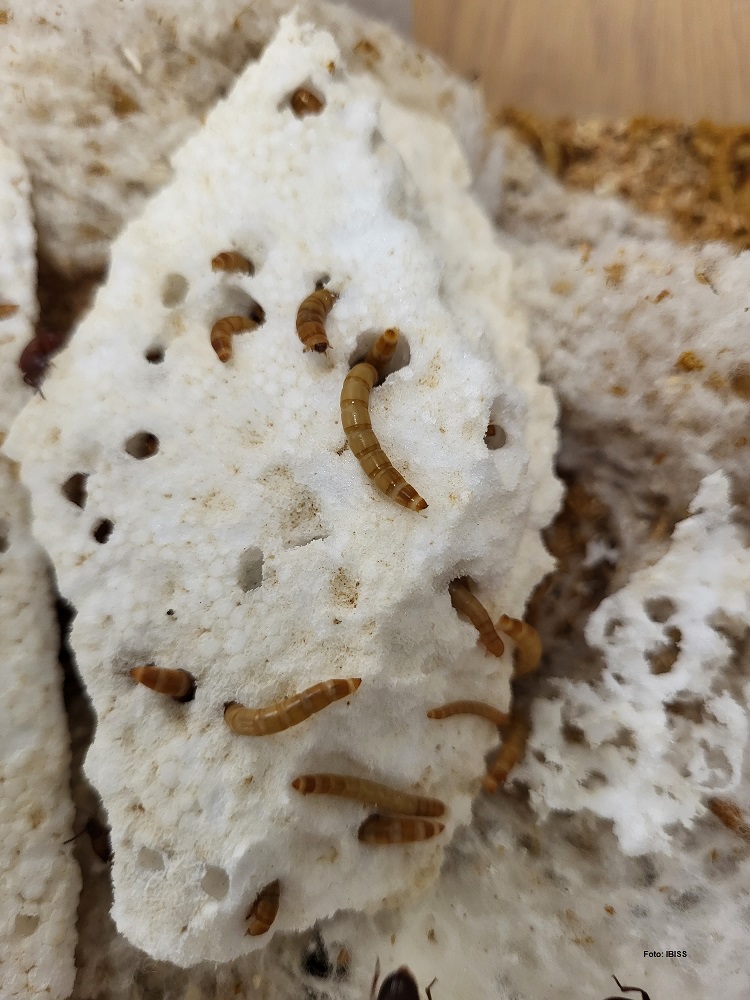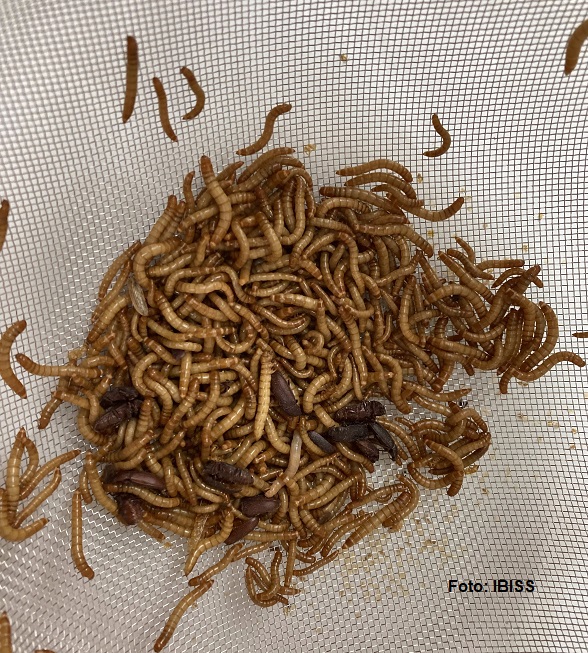Plastic-Eating Insects
October 5, 2023

The idea for biodegradation of plastics with the aid of mealworm larvae is one of the 16 innovative solutions, geared to accelerate the green transition, supported by the EU within the ‘EU for the Green Agenda in Serbia’ initiative.
Plastic waste is an ever-increasing burden on the environment and, consequently, the need to find new solutions for its disposal is on the rise as well. Biodegradation of plastics using insects, specifically mealworm larvae (lat. Tenebrio molitor) – is the lynchpin of a joint pioneering effort from Belgrade-based Belinda animals doo and the ‘Siniša Stanković’ Institute of biological research.

According to Boris Vasiljev from Belinda animals, the ability of some insects to degrade various types of waste has been known for years now, and mealworm larvae have the ability to degrade several types of plastic such as Styrofoam, polyethylene, polyvinyl chloride, and polyurethane.
"The ‘Siniša Stanković’ Institute of biological research has been breeding these insects for decades. Considering this is a laboratory-based, self-sustainable insect population, we initiated the formation of an incubator centre in cooperation with colleagues who already have the experience and know-how in breeding this type of larvae", Vasiljev continues.
According to his words, insect-assisted biodegradation of plastics is completely environmentally sustainable and highly cost-effective, as it does not require any special conditions. Larvae consume the plastics with other food and completely ‘process’ it with the aid of microorganisms in their digestive tracts, putting it to use for their further growth and development. No harmful matter or bits of plastic remain in the larvae after feeding. Their excrement (Frass) also does not contain any bits of plastic or harmful materials, so it can be used as organic compost, as well.

"Mealworm larvae populations are bred in small areas with readily accessible food such as wheat bran, cereal flakes, organic waste, with no additives, pesticides, antibiotics, without excessive consumption of water and energy, and with a great reduction in greenhouse gas (GHG) emissions. If we look at the example of Styrofoam, once the larvae have eaten it they will completely digest it, and if we dispose of it using the common method – incineration, every kilogram of Styrofoam will release around 3.96 kg of CO2 into the atmosphere", Vasiljev reflects.
An intensive mealworm hive breeding program is planned until the end of this year. The initial four breeding rooms for larvae rearing were procured, with an additional six arriving by September.
"We are adapting the substrate and plastics content so we can get the larvae to multiply quickly, create a healthy population and biodegrade as much plastics as they can. And keep it all scalable for more restricted breeding environments within agricultural households", Vasiljev recaps.
Insect use in animal feed
During our conversation he highlights how Tenebrio molitor larvae are rich in protein (45-60% of dry mass), fats (30-45% of dry mass), vitamins, Omega-3, -6, and -9 fatty acids, fibre, and minerals. He indicates that the larvae are an excellent source of protein and can therefore be used as animal feed, thus representing a key link in the food chain.
"The nutritional composition of the larvae is much better than the nutritional composition of other components used in animal feed, and therefore animals that are reared using larvae enjoy better growth and better health. Also, other forms of protein-rich animal feed require the use of large surface areas for growing, spending large quantities of energy and water, which significantly adds to GHG emissions", Vasiljev concludes and adds that Serbia currently has no legislation in place on the use of insects in animal feed:
"We expect harmonisation with EU provisions to happen soon. For the time being, though, mealworm larvae can only be used on individual agricultural holdings. I believe the use of these insects in animal feed should be allowed as soon as possible", said Vasiljev.

Potential beneficiaries of these larvae are individual farmers and breeders of poultry, pork, fish, as well as crop farmers, vegetable and food growers because of frass as high-quality organic fertiliser, and animal feed factories in the future.
"As with any peculiar idea, this solution will initially most likely encounter some resistance among potential users. However, we believe the obvious benefits of using mealworm larvae will attract a sufficient number of farmers to set up an initial network of farms for this type of insect. In terms of environmental contribution, the implementation of this initiative on just 1% of all agricultural households in Serbia would yield an estimated greenhouse gas emission reduction of 348,430 tonnes over a 20-year period. If we consider the average CO2 absorption per tree, it would mean that a little more than 15 million trees would be needed to absorb the equivalent amount of greenhouse gasses", Vasiljev concludes.
The ‘EU for Green Agenda in Serbia’ project, technically and financially supported by the European Union and implemented – in partnership with the Ministry of Environmental Protection – by UNDP, in cooperation with the Embassy of Sweden and the European Investment Bank (EIB), with additional funding provided by Governments of Sweden, Switzerland, and Serbia.

 Locations
Locations